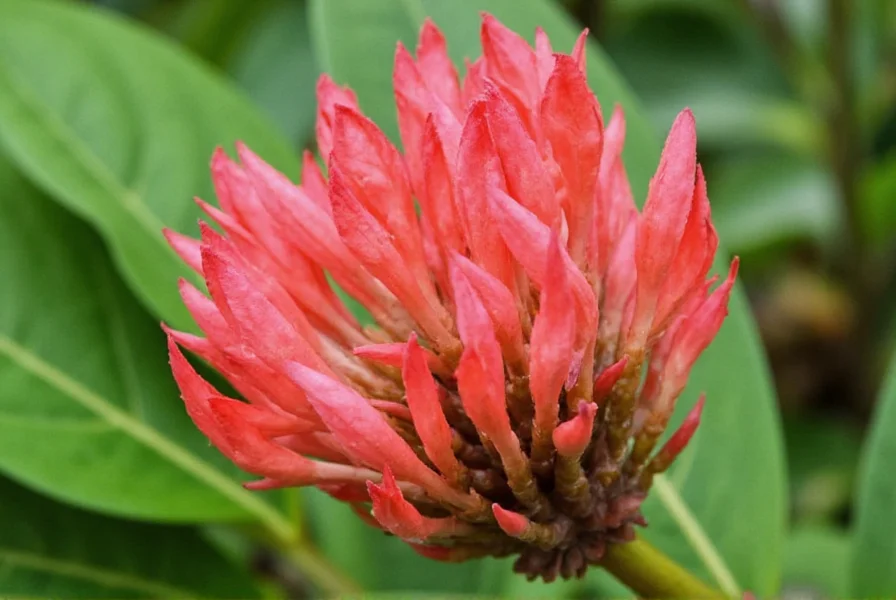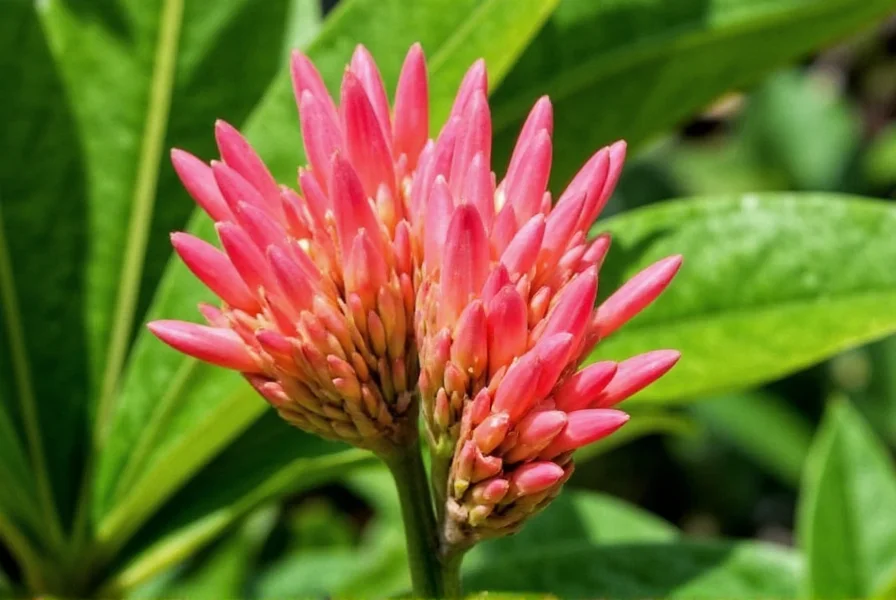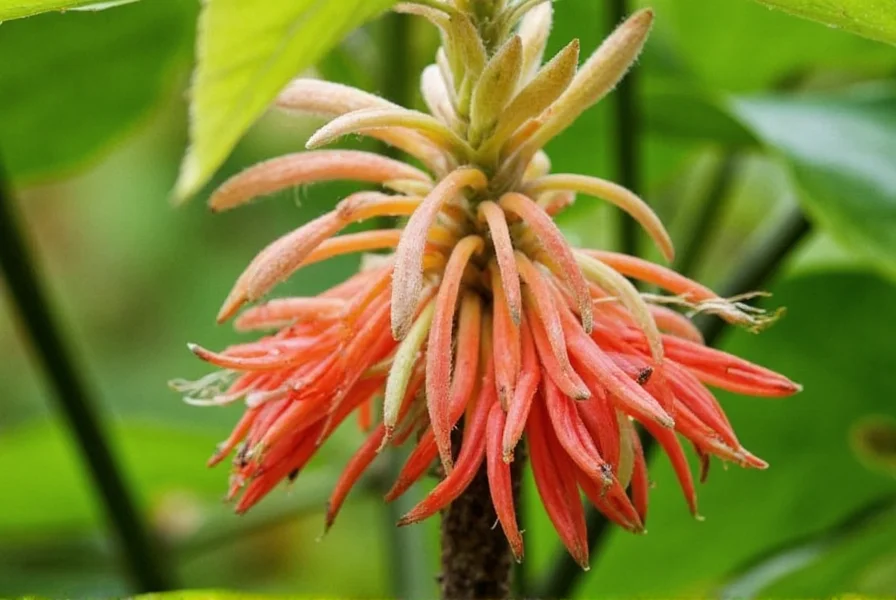Understanding ginger blooms requires knowledge of both culinary and ornamental ginger varieties. While many gardeners grow ginger primarily for its rhizomes, the flowering aspect reveals fascinating botanical characteristics that vary significantly across species. This comprehensive guide explores the blooming patterns, appearance, and requirements for ginger plants to flower successfully.
Botanical Background of Ginger Plants
Ginger belongs to the Zingiberaceae family, which includes over 1,300 species across 52 genera. The flowering structure, called an inflorescence, emerges from the rhizome alongside leafy shoots. Unlike many flowering plants, ginger blooms often appear before or alongside new foliage rather than after full leaf development.
True ginger (Zingiber officinale), cultivated for culinary use, produces relatively inconspicuous yellow-green flowers with purple edges when it does bloom. In contrast, ornamental gingers have evolved showier blooms to attract specific pollinators in their native tropical habitats. The flowering mechanism differs significantly between edible and ornamental varieties, explaining why kitchen gardeners rarely see blooms on their culinary ginger plants.

Characteristics of Ginger Blooms
Ginger flowers display remarkable diversity across species. Most ginger blooms feature:
- Cone-shaped or spike-like inflorescences
- Three-petaled flowers emerging from colorful bracts
- Distinctive lip or labellum that serves as a pollinator landing platform
- Subtle to intense fragrance, depending on species
- Seasonal blooming patterns tied to temperature and rainfall
The blooming cycle typically follows this pattern: first, a flower spike emerges from the soil; then, bracts gradually unfurl to reveal individual flowers; finally, flowers open sequentially from bottom to top over several days. Each flower remains open for just one day, but the entire inflorescence may continue blooming for 2-3 weeks.
Ginger Varieties and Their Blooming Patterns
Not all ginger plants flower with equal reliability. The following table compares common ginger varieties and their blooming characteristics:
| Ginger Variety | Bloom Appearance | Flowering Season | Bloom Reliability |
|---|---|---|---|
| Common Ginger (Zingiber officinale) | Yellow-green with purple edges | Rarely blooms outside tropics | Low (primarily grown for rhizomes) |
| Shell Ginger (Alpinia zerumbet) | Pendulous clusters, white with yellow/red | Summer to early fall | High (reliable bloomer) |
| Butterfly Ginger (Hedychium coronarium) | White, fragrant, orchid-like | Late summer | High (intensely fragrant) |
| Red Ginger (Alpinia purpurata) | Vibrant red bracts with small flowers | Year-round in tropics | Very high (commercial cut flower) |
| Hidden Ginger (Curcuma) | Purple, emerging from soil before leaves | Spring | Moderate (unique growth pattern) |
Optimal Conditions for Ginger Blooming
Several environmental factors determine whether your ginger plant will produce flowers. Understanding these conditions helps gardeners encourage blooming in suitable varieties:
Temperature Requirements
Ginger plants require consistent warmth to initiate flowering. Most varieties need daytime temperatures between 75-85°F (24-29°C) with nighttime temperatures no lower than 65°F (18°C). Sudden temperature drops below 50°F (10°C) can prevent flowering entirely. Tropical gingers evolved in stable warm climates, so they respond poorly to temperature fluctuations that commonly occur in temperate regions.
Light Conditions
While many ginger varieties tolerate partial shade, optimal blooming typically occurs with 4-6 hours of morning sunlight followed by afternoon shade. Direct, intense afternoon sun can scorch leaves and inhibit flowering. In their natural habitat, gingers grow as understory plants, so dappled light conditions often produce the best results for both foliage and blooms.
Soil and Moisture Needs
Well-draining, organically rich soil with consistent moisture supports healthy ginger blooming. The soil should remain moist but never waterlogged, as rhizomes will rot in standing water. During the active growing season (spring through fall), regular watering maintains the high humidity levels gingers prefer. Reducing water slightly as temperatures cool can help trigger flowering in some varieties.

Troubleshooting Common Blooming Issues
Gardeners often wonder why their ginger plants aren't flowering. Several factors commonly prevent ginger blooms:
Insufficient Maturity
Many ginger varieties require 2-3 years of growth before they develop enough energy reserves to produce flowers. Young plants focus energy on establishing rhizomes rather than flowering. Patience is essential when growing ginger for blooms, as rushing the process with excessive fertilizer often produces more foliage at the expense of flowers.
Improper Fertilization
Excessive nitrogen promotes leafy growth but inhibits flowering. For better blooming results, use a balanced fertilizer with higher phosphorus content during the growing season. Organic options like composted manure or bone meal provide gentle nutrient release that supports both rhizome development and flowering.
Climate Limitations
Ginger's tropical origins mean many varieties struggle to bloom outside USDA zones 8-11. Gardeners in cooler climates can grow ginger in containers and move plants indoors during winter, but the reduced light and temperature fluctuations often prevent flowering. Some hardier varieties like pinecone ginger (Zingiber zerumbet) may produce blooms in zone 7 with proper winter protection.
Ginger Blooms in Different Growing Environments
The blooming success of ginger varies dramatically based on growing conditions. In native tropical habitats, many ginger species flower reliably throughout the year. In temperate regions, flowering becomes seasonal and less predictable.
Container-grown ginger presents unique challenges for blooming. Restricted root space can limit energy available for flowering, though this can be offset with proper feeding and repotting. Gardeners report better blooming success when moving potted ginger outdoors during warm months to benefit from natural temperature cycles and increased light intensity.
Indoor ginger cultivation rarely produces blooms due to insufficient light intensity and stable temperatures that don't mimic natural seasonal changes. For those determined to see ginger flowers indoors, supplemental grow lights and careful temperature management may encourage occasional blooming in suitable varieties.
Practical Applications of Ginger Blooms
While culinary ginger rarely flowers outside the tropics, ornamental ginger blooms have several practical uses. Many varieties produce fragrant flowers suitable for cut arrangements, with butterfly ginger being particularly prized for its intense jasmine-like scent. Some cultures use ginger blooms in traditional ceremonies or as natural dyes.
It's important to note that while ginger flowers are generally non-toxic, they're not typically consumed like the rhizomes. The primary value of ginger blooms lies in their ornamental beauty and contribution to garden biodiversity, attracting hummingbirds and specific pollinators that support ecosystem health.
Frequently Asked Questions About Ginger Blooms
Do all ginger plants produce flowers?
No, not all ginger plants produce flowers reliably. Culinary ginger (Zingiber officinale) rarely blooms outside tropical regions, while ornamental varieties like shell ginger and butterfly ginger are bred specifically for their showy flowers. Some ginger species flower consistently in suitable conditions, while others may take several years to mature before producing blooms.
How long does it take for ginger to bloom after planting?
Most ginger varieties require 2-3 years of growth before they produce flowers. The first year typically focuses on establishing rhizomes and foliage, with flowering beginning in the second or third growing season under optimal conditions. Some fast-growing ornamental varieties may bloom in their second year, while culinary ginger often never flowers outside tropical climates.
Can I encourage my ginger plant to bloom?
Yes, you can encourage ginger blooming by providing optimal growing conditions: consistent warmth (75-85°F), partial sunlight, well-draining soil rich in organic matter, and balanced fertilizer with higher phosphorus content. Avoid excessive nitrogen which promotes foliage at the expense of flowers. For container plants, slightly root-bound conditions can sometimes trigger blooming, but severely restricted roots will prevent flowering.
Are ginger flowers edible?
While ginger flowers are generally non-toxic, they're not typically consumed like the rhizomes. Some varieties have mildly bitter flowers that can be used as garnishes, but they lack the distinctive ginger flavor of the rhizomes. Ornamental ginger flowers are primarily valued for their visual appeal rather than culinary use. Culinary ginger rarely produces flowers outside tropical regions, so edible flower production isn't a consideration for most home growers.
Why is my ginger plant growing but not flowering?
Several factors prevent ginger from flowering: insufficient maturity (most need 2-3 years), improper light conditions (too much shade or direct sun), incorrect temperature (needs consistent warmth), excessive nitrogen fertilizer, or unsuitable variety (culinary ginger rarely blooms outside tropics). Check your growing conditions against the specific requirements of your ginger variety, as ornamental types generally flower more reliably than culinary varieties.











 浙公网安备
33010002000092号
浙公网安备
33010002000092号 浙B2-20120091-4
浙B2-20120091-4